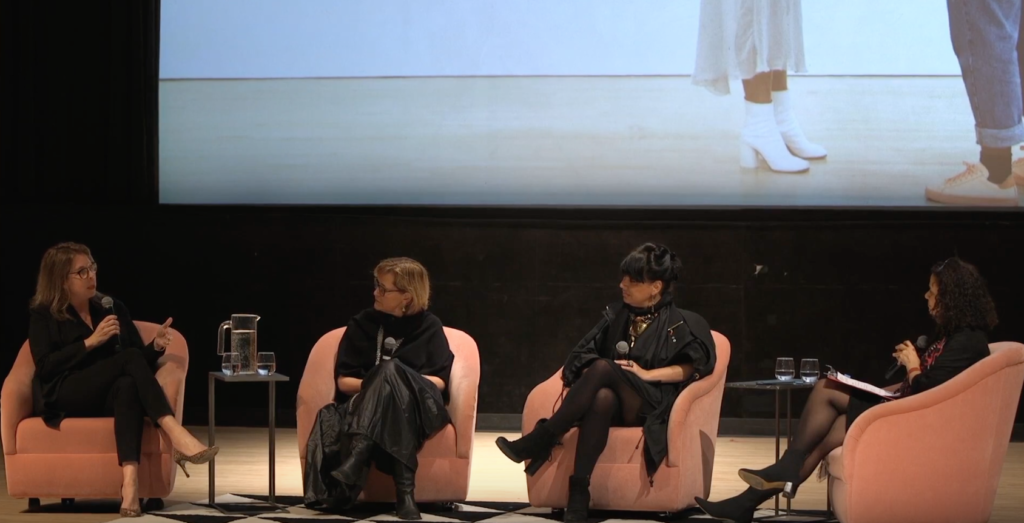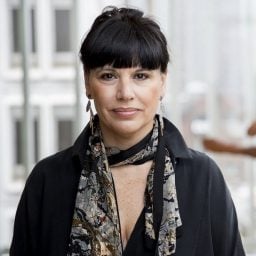The art world may like to bill itself as a bastion of liberalism and tolerance, but some of its leaders feel it has a long way to go—and may actually be moving backward.
On February 4, three leading women at the helm of major metropolitan museums—Nathalie Bondil of the Montreal Museum of Fine Arts, Kaywin Feldman of National Gallery of Art in Washington, DC, and Anne Pasternak of the Brooklyn Museum—came together for a discussion called “Women Leaders in the Arts” moderated by Alison Stewart, host of WNYC’s “All Of It.”
Given the title, guests to the sold-out talk at the Brooklyn Museum might have anticipated more discussion about women in the arts. But all three directors said they wanted to engage as leaders, not as women leaders. (In fact, Feldman at one point expressed concern that the museum field might be becoming too female, citing research that pay goes down when industries become “pink-collared.”)
Instead, the discussion frequently touched on what the directors described as a culture of intolerance that put pressure on institutions from both the right and the left.
“Our contemporary moment is a culture of meanness,” said Pasternak, in response to a question about what keeps her up at night. “It’s not based on facts. It’s not based on conversation… it’s destructive to our democracy and our institutions. Notice the bags under my eyes? That’s what it’s about.”
The worry, shared by all three panelists, seemed to be twofold. First, they expressed concern about a lack of nuance in the ongoing discussion about the role of donors and the recent protests over museum board members’ political and financial affiliations, including the Sackler family and the real estate industry’s relationship to the Brooklyn Museum. Such discussions often don’t just lack nuance, they have “no nuance,” according to Pasternak, who noted that “we’re quick to demonize people” without understanding the effects this might have on institutions we rely on.
“It’s very important to be open-minded and sit in conversation with people who have different views than you,” Pasternak said. “If we can’t have difference of thought, I worry what hope there is for all of us.”
Feldman also conceded that much of the hard work of a director involves reconciling the desires of important stakeholders with the need to serve a broad and inclusive audience. Donors, she said, “tend to be older,” “tend to be white,” and “don’t recognize changing America unless they’re taking their grandchildren to elementary school.” (Pasternak proposed that this issue be addressed partly by changing how board members are recruited, choosing them not simply for their ability to contribute financially, but also because of the personal and professional expertise they bring to the table.)
The panelists all seemed to walk a thin line between acknowledging that the older way of doing things was no longer acceptable, but also defending the museum as an institution that is not only redeemable, but essential to public life. The museum should be a “safe space for democratic dialogue,” said Bondil. She was reflecting on accusations of cultural appropriation faced by the Montreal Museum of Fine Arts in 2017, when it displayed a Jean-Paul Gaultier headpiece inspired by a Plains Indian headdress.
Rather than remove the work from the exhibition or simply leave it untouched, Bondil commissioned Cree artist Kent Monkman to respond to the Gaultier work. The ultimate resolution was a new performance art piece that involved a ceremonial marriage between Monkman and Gaultier.
“Our job is to make bridges between generations, between fields, between publics,” Bondil said. “Here, in this room, we might all agree about values… but we need to have a conversation with a deeper part of the population.”









